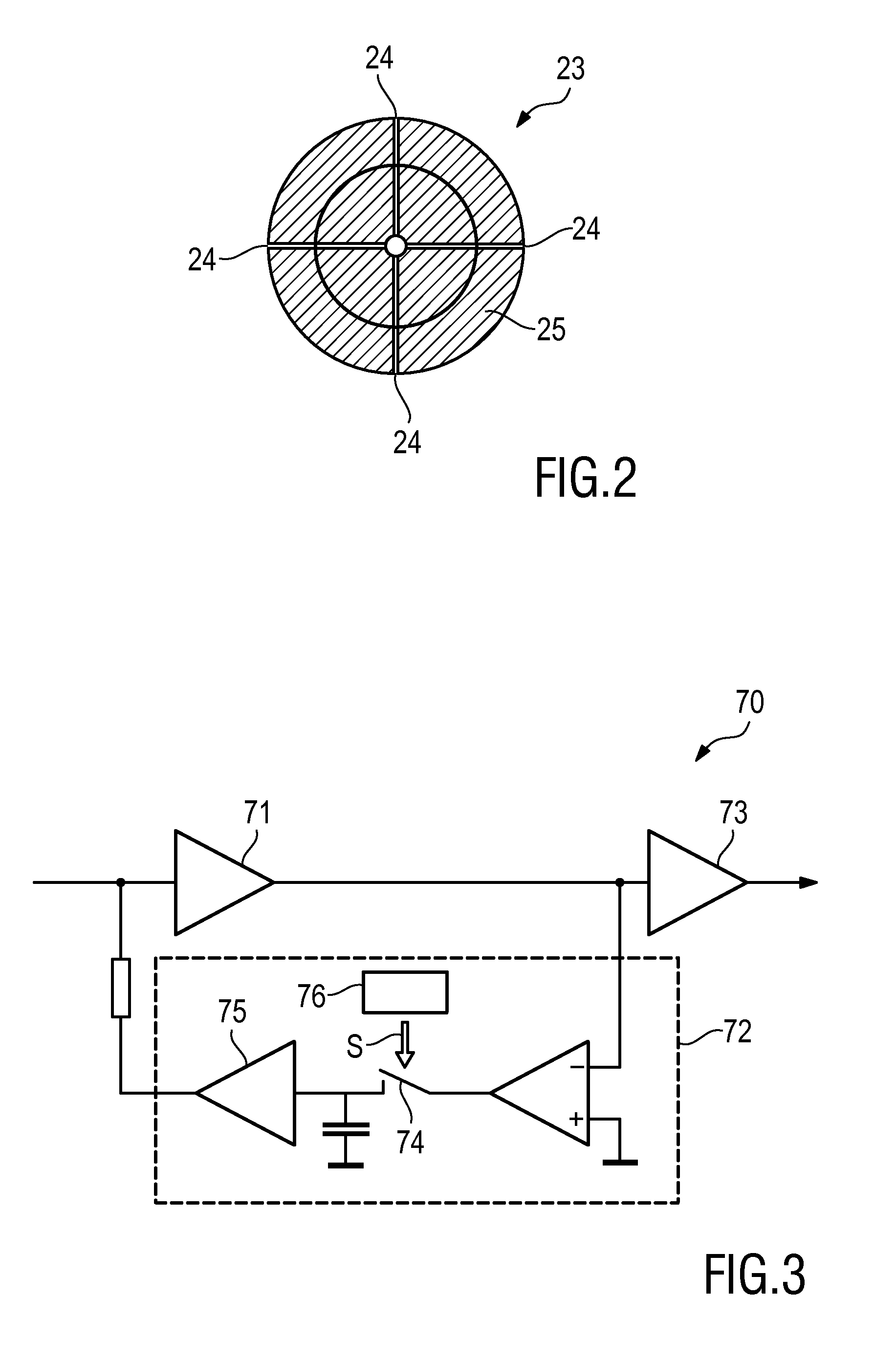Radiographic imaging apparatus and method
a radiographic and imaging apparatus technology, applied in the field of radiographic imaging apparatus, can solve the problems of significant signal degradation, erroneous binning of detected radiation into incorrect energy bins, and baseline shift of signals output by detector pixels, and achieve a simple and robust way of persistent current compensation
- Summary
- Abstract
- Description
- Claims
- Application Information
AI Technical Summary
Benefits of technology
Problems solved by technology
Method used
Image
Examples
first embodiment
[0036]FIG. 1 shows a proposed radiographic imaging apparatus 10. It comprises an X-ray source 20 for projecting X-ray radiation into an examination region 30 and a photon counting X-ray detector 40 for receiving X-ray radiation after passing through said examination region 30 and converting the received X-ray radiation into detector signals. In the examination region an object of examination, e.g. a patient, may be placed, e.g. lying on a patient table as generally known in the art.
[0037]The X-ray source 20 comprises a cathode 21 for emitting an electron beam 22 and a rotary X-ray anode 23 having a number of radial slits 24 and a target layer 25 provided on a surface of said rotary X-ray anode 23 in between said radial slits 24 for emitting X-ray radiation 26 when hit by said electron beam 22. A drive unit 27, e.g. formed as an electric motor comprising a rotor and a stator body, is provided for rotating said X-ray anode 23.
[0038]A top view on a rotary X-ray anode 23 having—in this ...
second embodiment
[0048]FIG. 4 shows a proposed radiographic imaging apparatus 100 which is implemented as a computed tomography (CT) scanner. The imaging apparatus 100 includes a stationary gantry 102 and a rotating gantry 104, which is rotatably supported by the stationary gantry 102. The rotating gantry 104 rotates around an examination region 106 about a z-axis. A radiation source 108, such as an X-ray tube, is supported by and rotates with the rotating gantry 104 around the examination region 106 about the z-axis. The source 108 emits radiation that traverses the examination region 106. An optional radiation controller 109 transitions a state of radiation emission between a first state in which radiation traverses the examination region 106 and a second state in which radiation does not traverse the examination region 106. This may include turning the source 108“on” / “off,” inserting / removing a filter from the path of radiation, applying / removing a grid voltage to a switching grid of the source 1...
PUM
 Login to View More
Login to View More Abstract
Description
Claims
Application Information
 Login to View More
Login to View More - R&D
- Intellectual Property
- Life Sciences
- Materials
- Tech Scout
- Unparalleled Data Quality
- Higher Quality Content
- 60% Fewer Hallucinations
Browse by: Latest US Patents, China's latest patents, Technical Efficacy Thesaurus, Application Domain, Technology Topic, Popular Technical Reports.
© 2025 PatSnap. All rights reserved.Legal|Privacy policy|Modern Slavery Act Transparency Statement|Sitemap|About US| Contact US: help@patsnap.com



